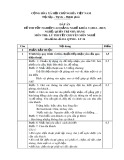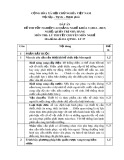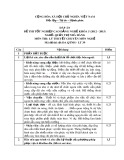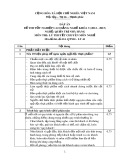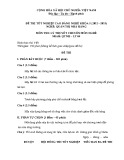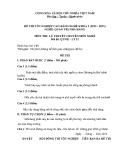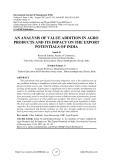
http://www.iaeme.com/IJM/index.as 23 editor@iaeme.com
International Journal of Management (IJM)
Volume 8, Issue 4, July– August 2017, pp.23–30, Article ID: IJM_08_04_004
Available online at
http://www.iaeme.com/ijm/issues.asp?JType=IJM&VType=8&IType=4
Journal Impact Factor (2016): 8.1920 (Calculated by GISI) www.jifactor.com
ISSN Print: 0976-6502 and ISSN Online: 0976-6510
© IAEME Publication
AN ANALYSIS OF VALUE ADDITION IN AGRO
PRODUCTS AND ITS IMPACT ON THE EXPORT
POTENTIALS OF INDIA
Sanal. B
Research Scholar, Faculty of Commerce,
International Center for Kerala Studies,
University of Kerala, Kariyavattam, Thiruvananthapuram, Kerala, India
Krishna Kumar. S
Assistant Professor, Department of Commerce,
Tandem Education and Professional study centre, Thiruvananthapuram, Kerala, India
ABSTRACT
The agriculture and agro based processing industries were a key solution area of
our problems relating to insuffiency of food and value added food products in India. It
attracts foreign reserve and domestic utilities of food products which creates standard
of living of the people. Export plays a significant role in the economic development of a
country by enabling national income through the effects of foreign trade multiplier.
India witnessed self sufficiency in food production only during the decade of eighties.
Agro processing sector is one of the largest sectors in India in terms of production, growth,
consumption, and export of value added agro products. The diverse agro- climatic zones
make it possible to grow almost all varieties of fresh fruits and green vegetables in India.
The fruit and vegetable processing industry in India is highly decentralized having wide
capacities. It is envisaged that India should be the food factory of the world so as to generate
income, employment and foreign exchange in a big way, through significant increase in
level of processing and achieve higher growth through value addition.
Key words: Value Addition, Agro Processing, GDP, Agro Exports
Cite this Article: Sanal. B and Krishna Kumar. S, An Analysis of Value Addition In
Agro Products and Its Impact on The Export Potentials of India. International Journal
of Management, 8 (4), 2017, pp. 23–30.
http://www.iaeme.com/ijm/issues.asp?JType=IJM&VType=8&IType=4





